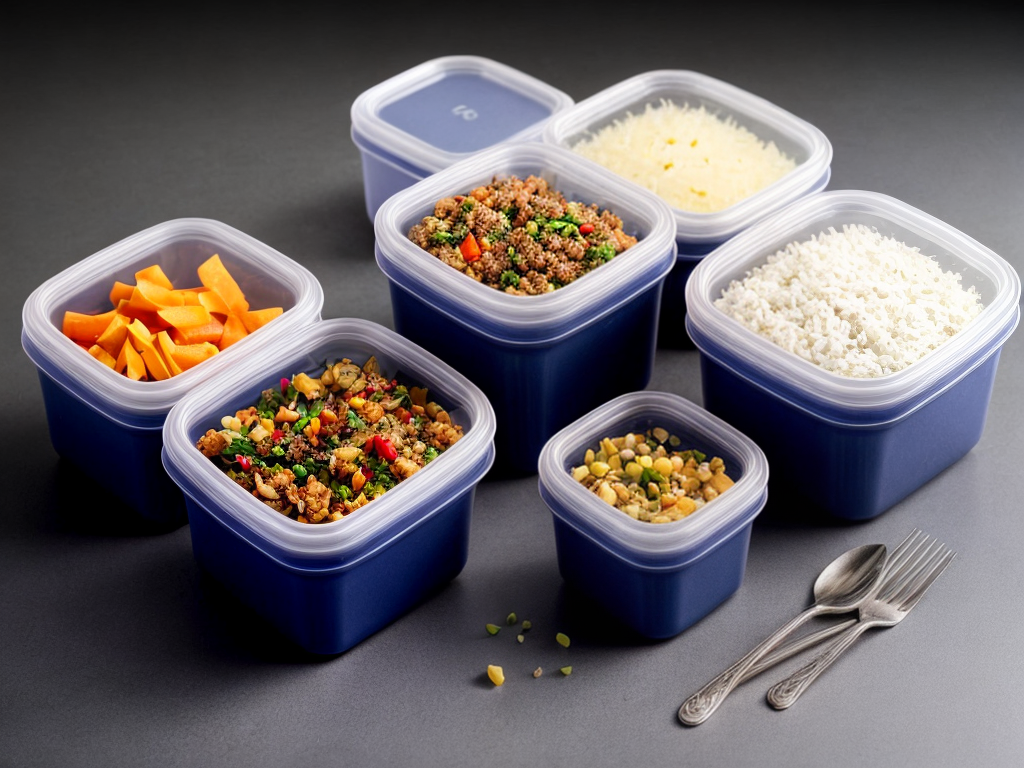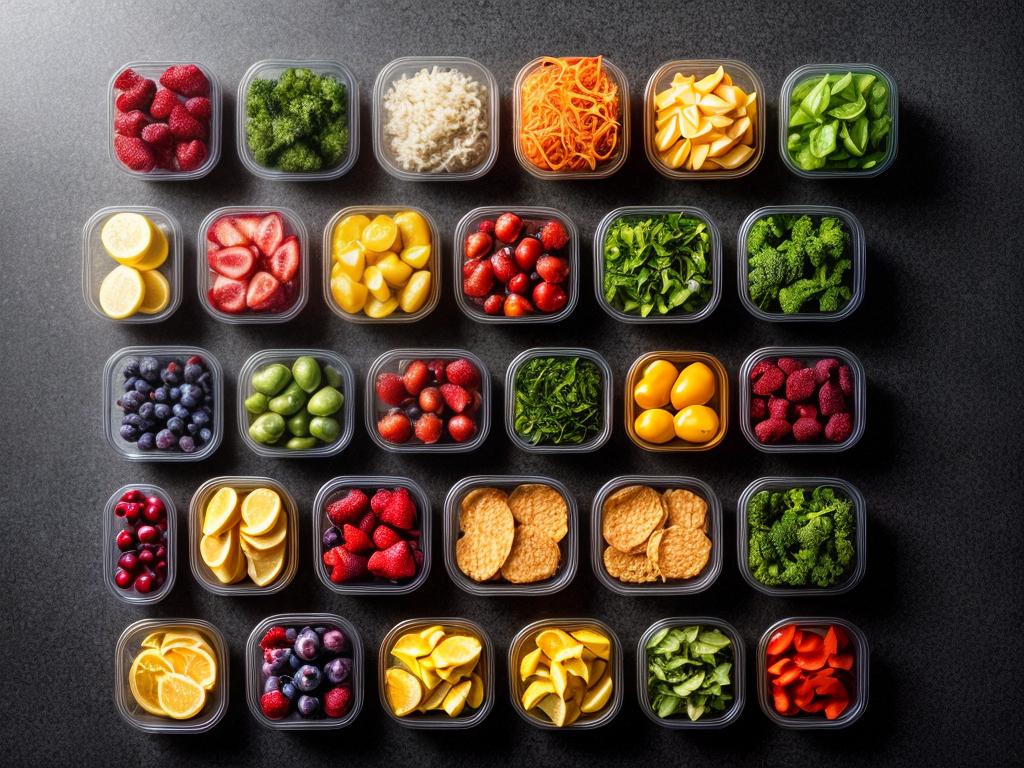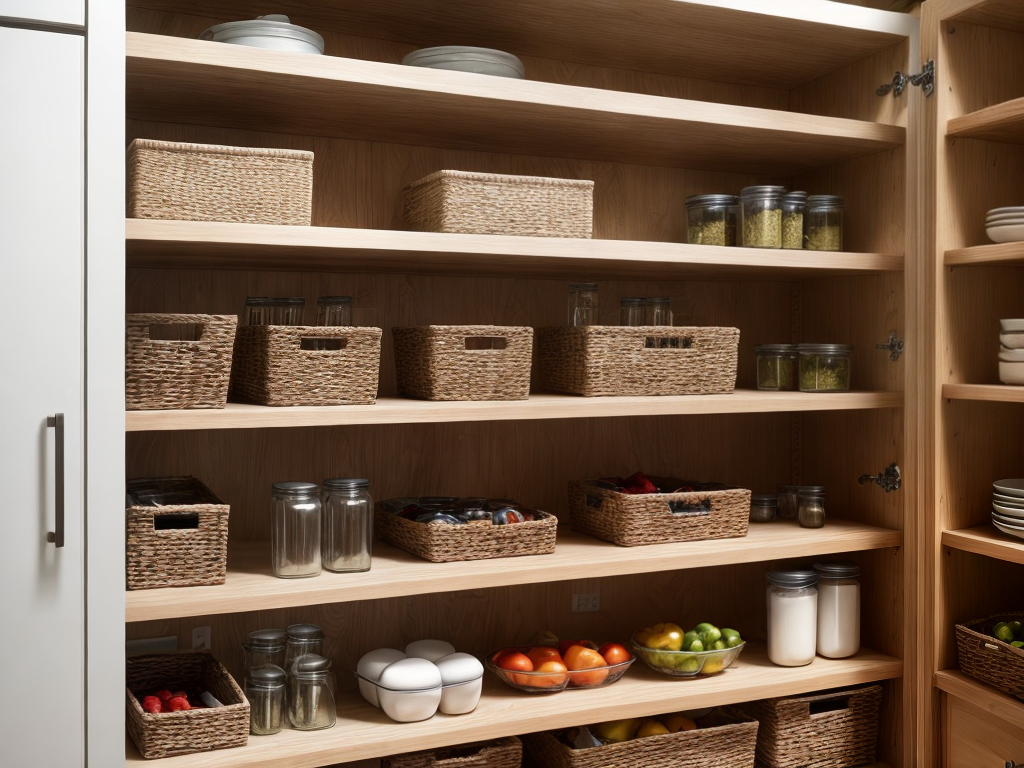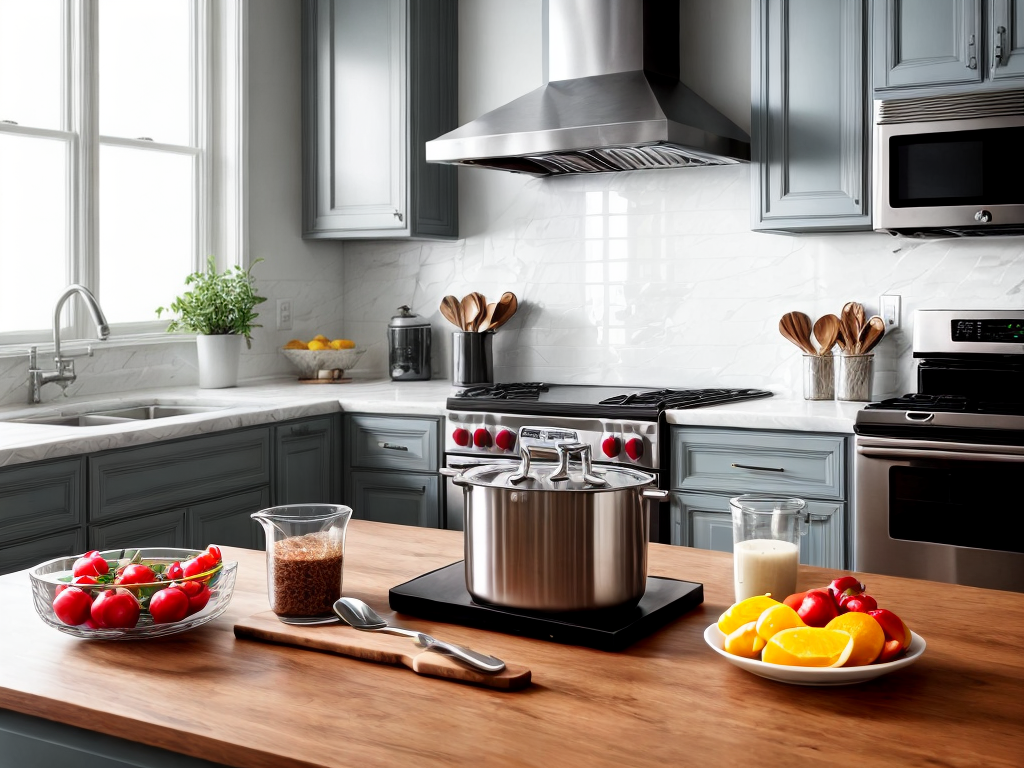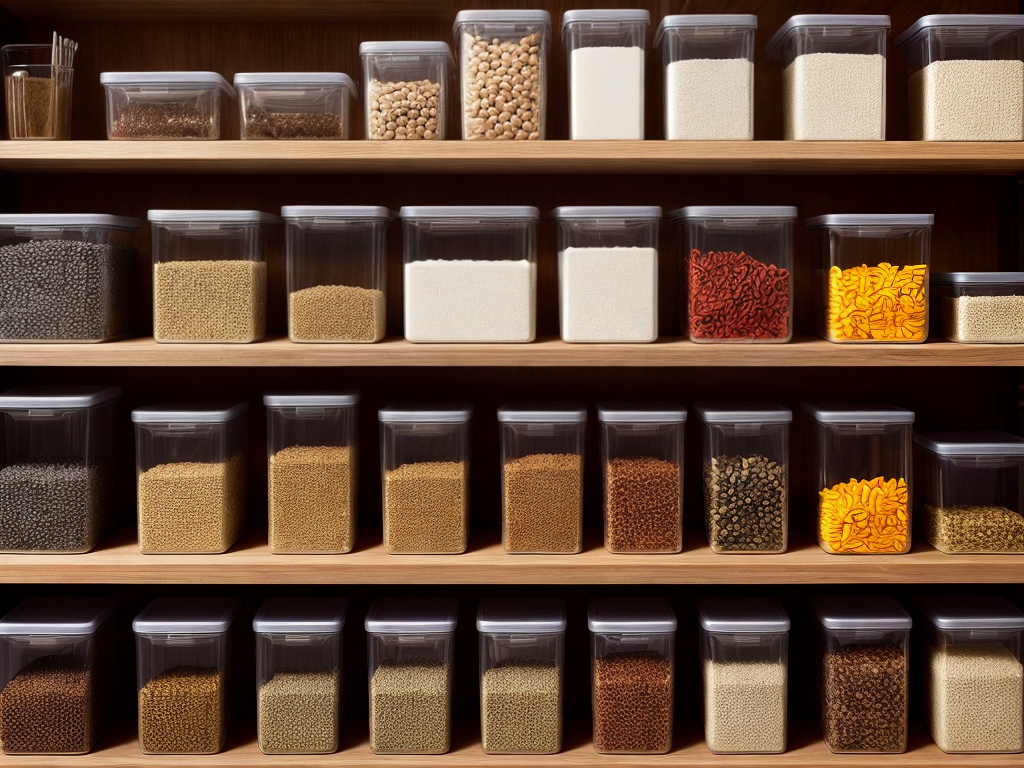
When it comes to preserving the integrity and safety of our food, temperature control is of paramount importance. Whether we realize it or not, the way we store our food can have a significant impact on its quality and freshness. It’s not just about keeping things cool or freezing them; it’s about maintaining the delicate balance that ensures our food remains safe to consume. So, next time you open your fridge or freezer, take a moment to consider the vital role temperature control plays in keeping your food fresh and free from harmful bacteria. You won’t believe what a difference it can make.
The Impact of Temperature on Food Safety
The temperature at which food is stored plays a critical role in ensuring its safety. The impact of temperature on food quality cannot be overstated, particularly in food manufacturing. Temperature control is essential to prevent the growth of harmful bacteria and the spoilage of food products. It is crucial to maintain proper temperature levels throughout the entire process, from production to storage.
In food manufacturing, temperature control is necessary during various stages, such as cooking, cooling, and storage. Heating food to the appropriate temperature kills harmful bacteria and ensures its safety for consumption. Rapid cooling is also important to prevent bacterial growth. Once food is cooked and cooled, it must be stored at the correct temperature to maintain its quality and safety.
Failure to control temperature can have severe consequences, including foodborne illnesses and product spoilage. The growth of bacteria can lead to food poisoning and other health risks. Additionally, improper temperature control can result in the deterioration of food quality, affecting its taste, texture, and nutritional value.
To ensure food safety, it is crucial for manufacturers to implement strict temperature control measures. This includes using proper refrigeration equipment, regularly monitoring and recording temperatures, and following established food safety guidelines. By prioritizing temperature control in food manufacturing, we can guarantee the highest level of quality and safety in the products we consume.
The Importance of Proper Refrigeration
Proper refrigeration plays a vital role in maintaining food safety and preventing bacterial growth. When it comes to food storage, temperature control is of utmost importance. Refrigeration slows down the growth of bacteria, keeping food fresh and safe for consumption. It is crucial to handle food properly to ensure its quality and prevent any potential health risks.
To maintain proper refrigeration, it is essential to set the refrigerator temperature at or below 40°F (4°C). This temperature range inhibits the growth of bacteria, ensuring that perishable foods remain safe for consumption. Additionally, it is crucial to store different food items separately to prevent cross-contamination. Raw meats, poultry, and seafood should be stored on the lower shelves to avoid any potential drips or leaks that may contaminate other foods.
Proper handling of food is also essential before refrigeration. It is crucial to promptly store perishable foods in the refrigerator after purchase or preparation. This prevents the growth of harmful bacteria. Additionally, leftovers should be cooled down quickly and stored in airtight containers to maintain their quality and prevent spoilage.
The Role of Freezing in Food Preservation
Freezing plays a crucial role in food preservation, ensuring that perishable items can be stored for extended periods without spoilage. It offers several benefits, such as maintaining the quality, texture, and flavor of food while inhibiting the growth of microorganisms. Effective temperature control techniques, such as rapid freezing and maintaining a consistent temperature below 0 degrees Celsius, are key to maximizing the preservation benefits of freezing.
Freezing: Food Preservation
When preserving food, one effective method that I highly recommend is freezing, as it allows for optimal temperature control and helps to maintain the freshness and quality of the food. Here are four reasons why freezing is an excellent food preservation technique:
-
Preservation of food quality: Freezing slows down the growth of bacteria and enzymes that can cause food spoilage. By freezing food, you can preserve its taste, texture, and nutritional value for an extended period.
-
Prevention of freezer burn: Freezer burn occurs when food is improperly packaged or exposed to air in the freezer, resulting in dry, discolored patches. By using airtight packaging and ensuring proper insulation, you can prevent freezer burn and maintain the quality of the frozen food.
-
Extended shelf life: Freezing food can significantly extend its shelf life compared to other preservation methods. This allows you to store perishable items for longer periods without compromising their quality.
-
Convenience and flexibility: With the option to freeze food, you can prepare meals in advance, store leftovers for future use, and take advantage of seasonal produce to enjoy them year-round.
Cold Storage Benefits
To fully understand the benefits of cold storage, it is essential to recognize the pivotal role that freezing plays in food preservation. Freezing is a technique that involves lowering the temperature of food to below its freezing point, effectively halting the growth of microorganisms and enzymes that can cause spoilage. By freezing food, we can extend its shelf life and maintain its quality for longer periods. This is one of the key advantages of cold storage. Additionally, freezing helps to retain the nutritional value of food by preserving vitamins, minerals, and other essential nutrients. It also allows us to stock up on seasonal produce and enjoy them throughout the year. The benefits of refrigeration, particularly freezing, cannot be overstated when it comes to food preservation and ensuring a constant supply of safe and high-quality food.
Temperature Control Techniques
With the pivotal role that freezing plays in food preservation, it is crucial to explore temperature control techniques to ensure the safe storage and extended shelf life of perishable goods. Here are four temperature control methods that are essential for effective freezing and food storage:
- Pre-cooling: Cooling food to an optimal temperature before freezing helps to maintain its quality and prevent bacterial growth.
- Freezer organization: Properly arranging food items in the freezer allows for efficient air circulation and even freezing temperatures throughout.
- Temperature monitoring: Regularly checking and maintaining the freezer temperature ensures that it remains at the recommended level for food safety.
- Proper packaging: Using airtight and moisture-resistant packaging materials, such as freezer bags or containers, helps to prevent freezer burn and maintain food quality.
Temperature Control and Bacterial Growth Prevention
Maintaining proper temperature control is essential for preventing bacterial growth in food storage. Bacteria multiply rapidly in conditions where the temperature is between 40°F (4°C) and 140°F (60°C), known as the “danger zone.” To ensure food safety, it is crucial to keep food either below 40°F (4°C) or above 140°F (60°C) to inhibit bacterial growth.
Temperature regulation plays a vital role in preventing bacterial contamination and foodborne illnesses. The table below highlights the recommended temperature ranges for various food items, helping you understand the importance of temperature control in food storage.
| Food Item | Recommended Temperature Range |
|---|---|
| Dairy products | 32°F (0°C) to 40°F (4°C) |
| Raw meat | 32°F (0°C) to 40°F (4°C) |
| Cooked meat | 140°F (60°C) or above |
| Fruits and veggies | 32°F (0°C) to 40°F (4°C) |
Maintaining Nutritional Value Through Temperature Control
Maintaining the nutritional value of food is crucial for ensuring its quality and health benefits. By controlling the temperature during storage, we can minimize nutrient loss and preserve the essential vitamins, minerals, and antioxidants that contribute to a balanced diet. Optimal storage conditions, such as proper refrigeration or freezing, play a vital role in preserving the nutritional value of food and maximizing its shelf life.
Optimal Storage Conditions
To ensure the highest nutritional value of stored food, it is crucial to maintain optimal storage conditions through temperature control. Here are four temperature control techniques that can help maintain the nutritional value of stored food:
- Keep the temperature below 40°F (4°C) to slow down enzyme activity and prevent nutrient degradation.
- Avoid temperature fluctuations by maintaining a consistent temperature in the storage area.
- Store perishable items, such as fruits and vegetables, at a temperature slightly above freezing to preserve their freshness and nutritional content.
- Use refrigeration or freezing methods to extend the shelf life of food items without compromising their nutritional value.
Minimizing Nutrient Loss
Minimizing nutrient loss through temperature control is essential for preserving the nutritional value of stored food. Temperature plays a crucial role in determining the rate at which nutrients degrade, affecting not only the taste but also the overall quality of the food. When food is stored at improper temperatures, it can lead to increased nutrient absorption, resulting in a decrease in nutritional value. By maintaining optimal temperature conditions, we can minimize nutrient loss and ensure that the food retains its nutritional value for longer periods. Temperature control is vital in preserving the delicate balance of vitamins, minerals, and other essential nutrients, ensuring that the food we consume is as nourishing as possible. By prioritizing temperature control, we can uphold the quality and nutritional content of our stored food.
Temperature Control and Food Spoilage Prevention
Proper temperature control is essential for preventing food spoilage. Maintaining the right temperature not only improves food quality but also prevents the risk of foodborne illnesses. Here are four key reasons why temperature control is crucial in preventing food spoilage:
-
Bacterial growth inhibition: By storing food at the correct temperature, we can inhibit the growth of harmful bacteria. High temperatures can promote bacterial growth, leading to spoilage and potential foodborne illnesses.
-
Enzyme activity reduction: Temperature control helps slow down the activity of enzymes present in food. Enzymes can cause degradation and spoilage, affecting both taste and texture.
-
Preservation of nutrients: Proper temperature control helps preserve the nutritional content of food. High temperatures can lead to nutrient loss, diminishing the overall nutritional value of the food.
-
Extension of shelf life: By maintaining the right temperature, we can extend the shelf life of perishable items. This reduces food waste and ensures that food remains safe and fresh for longer periods.
Best Practices for Temperature Control in Food Storage
Implementing effective temperature control practices is crucial for maintaining the safety and quality of food during storage. To ensure optimal temperature control in food storage, it is important to follow the best practices and utilize temperature control techniques. One of the key practices is to regularly monitor and record the temperature of the storage areas. This can be achieved by using temperature monitoring devices such as thermometers or data loggers. It is recommended to place these devices in different locations within the storage area to obtain accurate temperature readings.
Another important practice is to establish temperature control zones within the storage area. This involves categorizing different types of food based on their temperature requirements and storing them accordingly. For example, perishable items like meat and dairy products should be stored in a separate zone with lower temperatures, while non-perishable items can be stored in a zone with slightly higher temperatures.
Proper insulation of storage areas is also crucial for maintaining temperature control. This can be achieved by ensuring that the storage areas are well-sealed and insulated. Additionally, it is important to regularly clean and maintain the storage equipment, such as refrigerators and freezers, to ensure their optimal performance.
Conclusion
In conclusion, temperature control is of utmost importance in food storage to ensure food safety, prevent bacterial growth, maintain nutritional value, and prevent food spoilage. Proper refrigeration and freezing play crucial roles in preserving the quality and freshness of food. By following best practices for temperature control, such as maintaining proper storage temperatures and regularly monitoring them, we can ensure that the food we consume is safe, healthy, and free from contamination.

